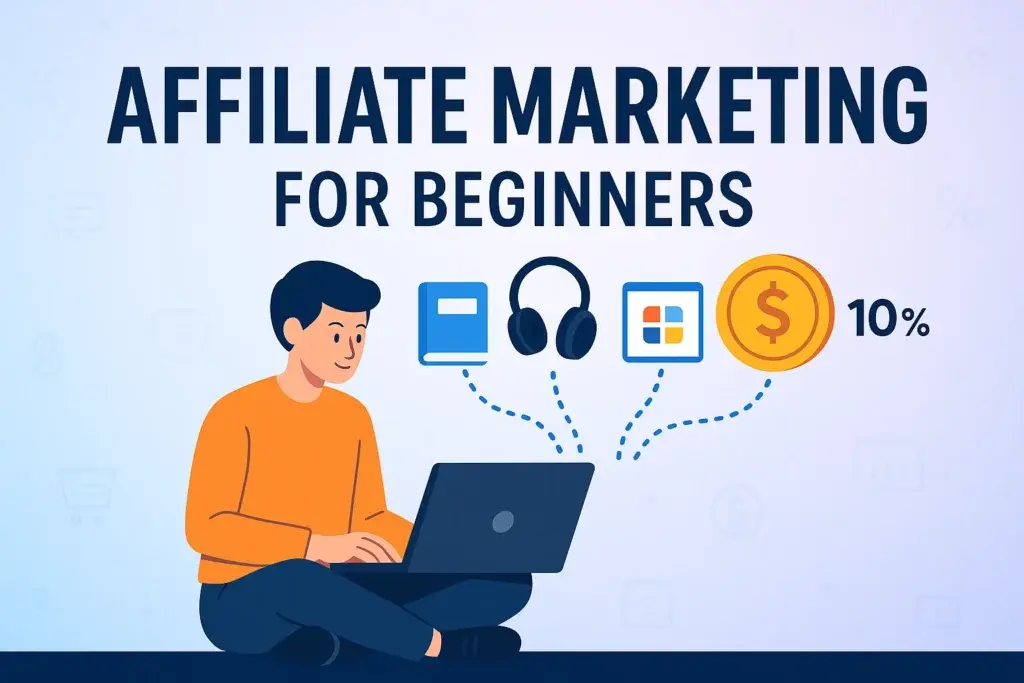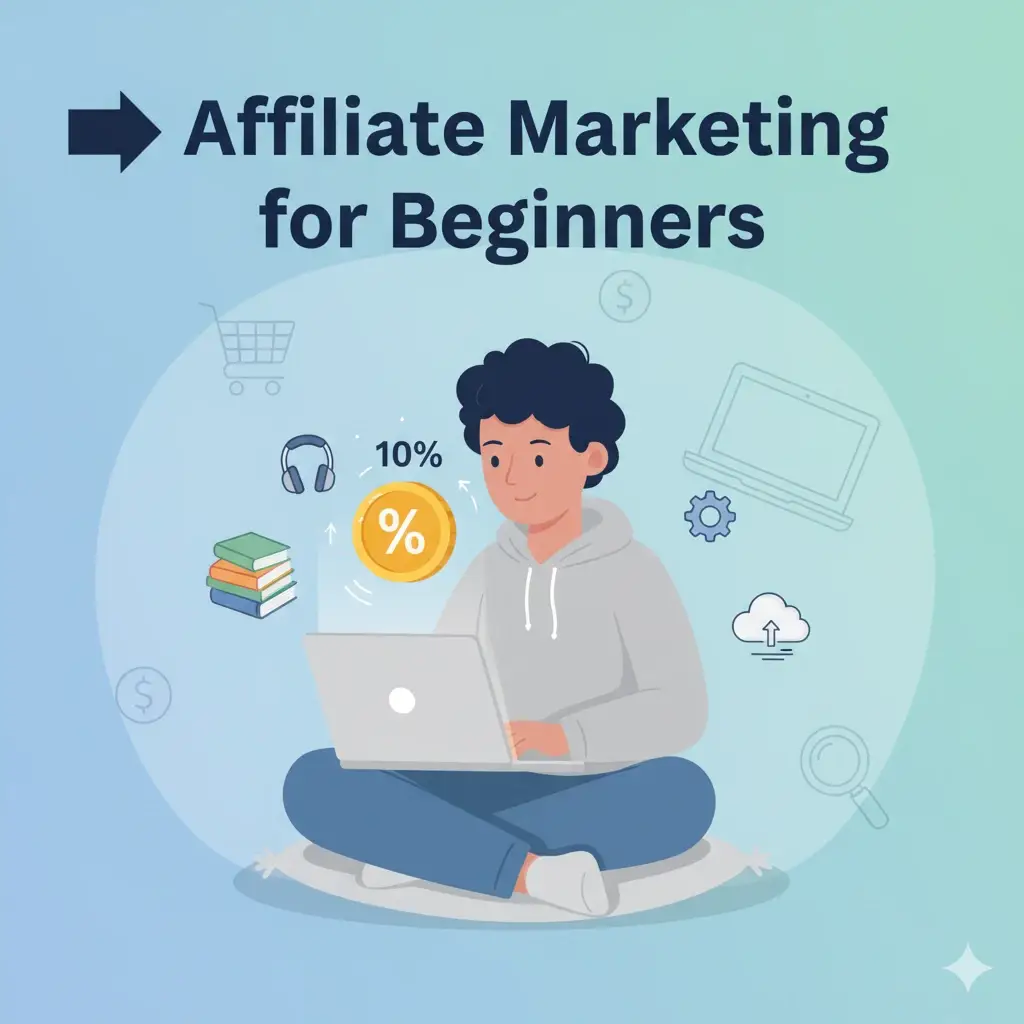If you’ve ever wondered how people make money online without creating their own products, chances are you’ve stumbled upon affiliate marketing. It sounds simple at first glance — promote someone else’s product and get a commission when people buy through your link. But like most things in life, it’s not as effortless as some “gurus” make it look on Instagram.
Still, it is one of the most beginner-friendly ways to start building an income stream online. You don’t need to be a tech wizard. You don’t need a huge investment. What you need is patience, strategy, and a realistic understanding of how the game works. Let’s break it down in a way that makes sense for a total beginner.
What Affiliate Marketing Actually Is (Without the Buzzwords)
Affiliate marketing is basically a partnership between you (the promoter) and a company (the seller). You recommend their product through a unique link. If someone clicks that link and makes a purchase, you earn a small cut of the sale.
For example, say you’re a student who loves gadgets. You join Amazon’s affiliate program. You write a blog post about “Best budget laptops for college students” and include Amazon links. If a reader clicks your link and buys the laptop, Amazon pays you a commission.
Simple, right? Yes — but here’s the catch. If all you do is spam links on social media, nobody clicks, and you don’t make anything. The real skill is learning how to build trust and create content that people actually find helpful.
Why Beginners Fail at Affiliate Marketing
Most people quit affiliate marketing within a few months. And it’s not because it doesn’t work. It’s because they fall into one of these traps:
-
Thinking it’s fast money.
Truth is, affiliate income is usually slow in the beginning. It can take months of consistent effort before you see the first $50. -
Chasing random products.
Promoting everything under the sun doesn’t work. If your page recommends pet food today, weight-loss pills tomorrow, and hosting services the next day, nobody trusts you. -
Copy-pasting without adding value.
People can find product details on the company’s own site. Your job is to make it relatable, share your perspective, compare products, and explain why someone should choose this over that.
So, before we even dive into “steps,” remember: affiliate marketing is simple but not easy. You’ll need focus, patience, and consistency.
Step 1: Pick a Niche (But Don’t Overthink It)
The first thing every beginner hears is “find your niche.” And yes, it’s important. But don’t let this decision paralyze you. A niche just means a focused area where you’ll create content.
Here are a few ways to think about it:
-
What are you naturally interested in? If you already love skincare, gaming, cooking, or personal finance, that’s a good start. It’s easier to talk about things you actually care about.
-
Does it have affiliate-friendly products? Some topics (like fashion, beauty, tech, fitness, software tools) have tons of affiliate programs. Others might not.
-
Is the audience big enough? A niche like “vegan snacks for kids” might be too narrow. A broader niche like “healthy snacks for families” has more potential.
👉 Quick reality check: you don’t need to find the “perfect” niche. You can start with what you know and pivot later.
Step 2: Find Affiliate Programs
Once you know your niche, the next step is to find affiliate programs. Here’s where beginners often get stuck, but it’s not that complicated.
-
Amazon Associates – The easiest place to start. Tons of products, but commissions are pretty low (1–4%).
-
Affiliate networks – Sites like ShareASale, CJ Affiliate, or Impact connect you with different companies.
-
Direct programs – Many brands (like Bluehost, Nike, Grammarly, or Canva) run their own affiliate programs. Usually, you’ll find them at the bottom of their website under “Affiliates.”
When choosing programs, don’t just look at commission rates. A high payout doesn’t mean anything if the product is bad or hard to sell.
Step 3: Build Your Platform
Here’s the part where people argue. Some say you need a blog. Others swear by TikTok, Instagram, or YouTube. The truth? You can choose whichever platform feels natural to you.
-
Blog/Website – Best for long-term traffic. Google search can bring visitors for years if your articles rank.
-
YouTube – Great for tutorials, product reviews, or “unboxing” videos.
-
Social Media (TikTok, Instagram, Pinterest) – Perfect for short, engaging content if you enjoy being on camera or making creative posts.
If you’re serious, having your own website is smart. Think of it as your “home base.” Social media platforms change rules, but your website is yours.
👉 Beginner tip: You don’t need to spend thousands on web design. A simple WordPress site with a clean layout is enough.
Step 4: Create Content That Actually Helps
Affiliate marketing isn’t about selling. It’s about helping people make decisions. The better you do that, the more they trust your recommendations.
Types of content that usually work well:
-
Product reviews – Honest pros and cons. People respect transparency.
-
Comparison posts – “X vs Y: Which one is better?”
-
Tutorials/How-to guides – Show people how to solve a problem using the product.
-
Listicles – “Top 10 budget smartphones for 2025”
Remember: your voice matters. Don’t write like a brochure. Share your personal take, mention your experience, or even admit when something isn’t perfect.
Step 5: Learn Basic Traffic Strategies
Having affiliate links means nothing if nobody clicks them. Traffic is where most beginners stumble. Let’s keep it simple:
-
SEO (Search Engine Optimization): Learn how to write content that ranks on Google. It takes time, but it’s worth it.
-
Social media: Use platforms like Instagram Reels, TikTok, or Pinterest to share bite-sized content that points back to your site or link.
-
Email list: Even a small list of 100–200 people who trust you can bring consistent sales.
-
Paid ads: Not recommended for beginners unless you have extra money to test. Organic methods are safer at first.
Step 6: Be Patient (Seriously)
Affiliate marketing is like planting seeds. You can’t drop a seed today and expect a tree tomorrow. It takes weeks or months for content to rank, for people to trust you, and for clicks to turn into purchases.
Most beginners quit right before things start working. If you keep showing up, publishing content, and tweaking your strategy, results compound over time.
A Quick Example: How a Beginner Could Start Today
Let’s say you’re into fitness but don’t want to be a gym trainer. You could:
-
Start a blog called FitOnABudget.com.
-
Write articles like “Best Resistance Bands for Beginners” or “Top 5 Protein Powders Under $30.”
-
Join Amazon’s affiliate program and link to those products.
-
Create short TikTok clips demonstrating the resistance bands.
-
Post them with your affiliate link in the bio or direct people to your website.
Within a few months, if you’re consistent, you might start seeing clicks and sales. Nothing crazy at first — maybe $20–$50. But as your content grows, so does your income.
Common Beginner Mistakes to Avoid
-
Spamming links everywhere – It doesn’t work. People need trust, not random links in Facebook comments.
-
Promoting stuff you don’t believe in – If someone buys a bad product from your link, they’ll never trust you again.
-
Ignoring the legal side – Always disclose that your links are affiliate links. In most countries, it’s required.
-
Quitting too soon – This one hurts the most. The early months are slow for everyone.
How Much Money Can You Make?
This is the big question. The honest answer: it depends. Some affiliates make $100 a month. Others make six figures.
Factors that matter:
-
Your niche (finance and software usually pay higher than, say, books).
-
Your traffic (more visitors = more clicks).
-
Your content quality (do people trust your recommendations?).
For beginners, aiming for your first $100–$500 is realistic. Once you reach that, scaling up becomes much easier.
The Mindset That Actually Works
Think of affiliate marketing as a marathon. Your first goal isn’t to make thousands. It’s to learn the process:
-
How to create content.
-
How to attract people.
-
How to convert clicks into sales.
If you can do that consistently, the money will come.
Final Thoughts
Affiliate marketing is one of those things that looks easy from the outside but requires discipline from the inside. The good news? You don’t need fancy skills to start. You just need to pick a niche, find programs, build a platform, create helpful content, and stay patient.
It’s not glamorous in the beginning. But if you stick with it, affiliate marketing can turn into a reliable side income — or even a full-time career.
So, if you’re a beginner wondering, “Should I give this a try?” The answer is yes — but go in with realistic expectations, and treat it like planting seeds that will grow over time.




